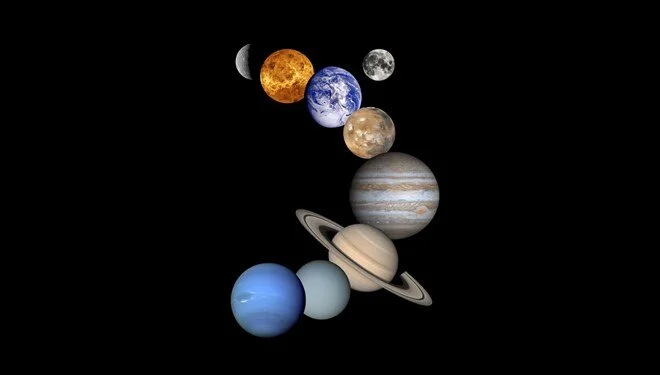At the beginning of the year, 7 planets will be visible at the same time, 5 with the naked eye and 2 with a telescope.
The Moon will accompany the 7 planets with its phase very close to the full moon. Pluto, which is removed from the planet, can be viewed with telescopes with a diameter of 20-30 cm.
According to the celestial event, which is shown as one of the most important celestial events of 2022 in the Celestial Events Yearbook, which is compiled every year by the TUBITAK National Observatory (TUG) in Antalya, 5 of them are seen with the naked eye and 2 with a telescope since sunset on December 31, 2022. 7 planets will be visible at the same time.
These planets will be accompanied by the Moon with its phase very close to the full moon. Those with a telescope with a diameter of 20-30 centimeters will also be able to watch Pluto.
Acting Director of TÜBİTAK National Observatory Dr. Tuncay Özışık said that the sky event that can be seen from the sunset on 31 December is a very rare event.
Stating that all of the planets will be seen in the sky at once, Dr. Özışık said, “What I remember was four planets in 2018; You could see them all in one night. But the probability of 6-7 such planets appearing in the sky at a certain time is really very low. “Further calculations show that something similar will happen in about 2040,” he said.
PLANET LINEUP STARTED IN AUGUST
Stating that 5 planets can be viewed with the naked eye and 2 planets with a small telescope, Dr. Özışık said, “The feature of 2022 is; Since August, these planets began to line up in a certain order in the sky. Of course, we gave the date December 31st because it was interesting. People can do a nice observation activity for themselves on New Year’s Eve if the weather is clear. It can be seen on the 30th. But the feature of 31 of them; The moon is also in a beautiful phase. Therefore, we will be able to see Mercury, Venus, Mars, Jupiter, Saturn and the Moon with the naked eye. Observers with telescopes also have a chance to see Uranus and Neptune; It will be above the horizon, in the sky.”
CAN BE VIEWED FROM 17.30
Emphasizing that the event in the sky will be a real feast, Dr. Ozışık said:
“From 5:30 p.m., when you look at it at a certain time, it will all be in the sky. Or you wait until morning. On any given day in the normal year, the planets rise and set in order, and you can see them to a large extent. But the feature of this; If they look at the sky after 17.30 on New Year’s Eve; they can distinguish these planets at the same time very well. Mercury and Venus are near the western horizon, their duration is short. But Jupiter, Saturn and Mars are easily visible until after midnight.”
A LARGE TELESCOPE IS REQUIRED TO SEE PLUTO
Stating that the Celestial Events Yearbook contains configurations and information about the celestial event, Dr. Özışık said, “Pluto, on the other hand, was removed from planetary status, but was included in the minor planet class as an object. On the evening of December 31, it is also around Mercury, Venus. But it takes a really large telescope to see Pluto. But I think curious people will try to view Pluto as well. Because it is a very distant and very small planet, it is extremely dim; It is invisible even with a medium telescope, a telescope larger than 20-30 centimeters is needed,” he said.

